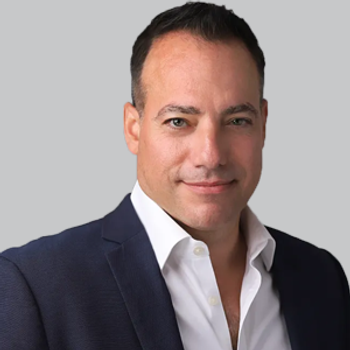
Therapeutic Promise and Mechanism of DYNE-101 to Treat Myotonic Dystrophy: Doug Kerr, MD, PhD
The chief medical officer at Dyne Therapeutics discussed the scientific rationale and clinical progress of z-basivarsen, an antisense oligonucleotide therapy designed to correct mis-splicing in myotonic dystrophy type 1. [WATCH TIME: 5 minutes]
WATCH TIME: 5 minutes | Captions are auto-generated and may contain errors.
"We’ve shown that z-basivarsen can reach billions of muscle and CNS cells, correct the splicing defect at the heart of DM1, and deliver meaningful functional improvements that patients and clinicians can see."
Like many other neuromuscular disorders, there are currently no approved disease-modifying treatments for myotonic dystrophy type 1 (DM1). Patients with this rare, multisystem disorder experience issues in skeletal, cardiac, smooth muscle, and central nervous system (CNS) domains, making the delivery of therapies to muscle tissue a challenge. Currently, there are a few emerging therapeutics in the clinical pipeline.
To date, zeleciment basivarsen (z-basivarsen, formerly known as DYNE-101) has received orphan drug, fast track, and breakthrough therapy designations from the FDA, and orphan drug designation from the European Medicines Agency for DM1. The agent’s lead trial is the ACHIEVE study (NCT05481879), a phase 1/2 global, randomized, double-blind, placebo-controlled, multiple-ascending dose design, in adults with DM1 aged between 18 and 49 years. It includes a 24-week placebo-controlled period, a 24-week open-label extension, and a longer-term extension that lasts up to 144 weeks.
NeurologyLive® recently sat down with Doug Kerr, MD, PhD, chief medical officer of Dyne Therapeutics, to discuss the mechanistic action of z-basivarsen and its precision-engineered approach to treating DM1. Kerr, a neurologist and neuroscientist with years of experience, also provided commentary on the promising 12-month data from the ongoing phase 1/2 ACHIEVE trial (NCT05481879) for z-basivarsen in DM1 that was presented recently at the 2025 World Muscle Society (WMS) annual meeting. He noted patient improvements in myotonia, muscle strength, and timed functional tests, underscoring z-basivarsen's potential as a disease-modifying therapy for DM1.
Newsletter
Keep your finger on the pulse of neurology—subscribe to NeurologyLive for expert interviews, new data, and breakthrough treatment updates.




















